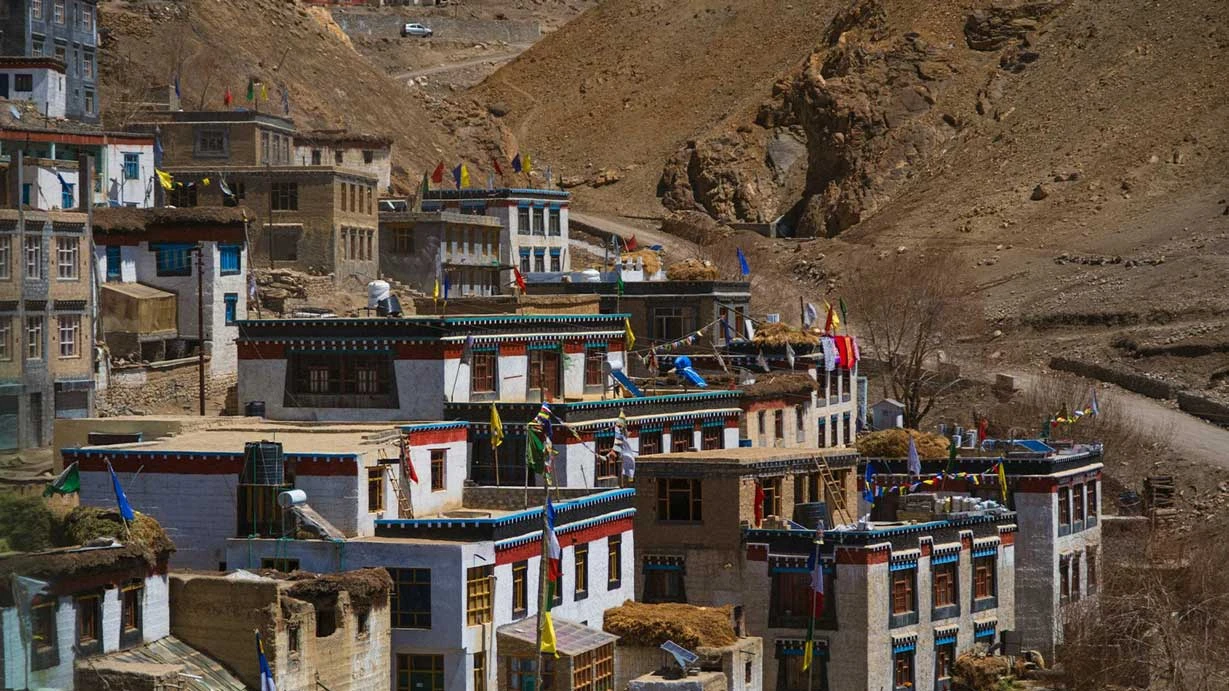
Kibber is a traditional Spitian village located at 4,270 meters (14,200 ft), about 19 km from Kaza. Once known as the highest motorable village in the world, Kibber now holds fame for being the starting point of snow leopard expeditions in Spiti Valley.
Nestled within the Kibber Wildlife Sanctuary, the village is surrounded by rugged mountains, deep canyons, and vast high-altitude meadows. Its unique stone houses, unlike the mud-brick houses of other villages, give it a distinct charm. Kibber is also a hub for trekkers and wildlife enthusiasts exploring the remote wilderness of Spiti.
Best Time to Visit Kibber
May – October: Best for road trips, treks, and village stays.
July – September: Ideal for lush meadows and photography.
January – March: Prime time for snow leopard spotting, though extremely cold and challenging.
Why Visit Kibber
To explore one of the highest villages in the world.
To witness snow leopards and Himalayan wildlife in their natural habitat.
To trek through the Kibber Wildlife Sanctuary.
To experience an authentic Spitian lifestyle in stone-built houses.
To visit nearby landmarks like Chicham Bridge and Key Monastery.
Things to Do in & Around Kibber
Wildlife Safari – Go on guided expeditions to spot snow leopards, ibex, blue sheep, and red foxes.
Walk Around the Village – Explore unique stone houses and interact with locals.
Stay in a Homestay – Experience traditional Spitian meals and hospitality.
Photography – Capture the village against dramatic Spiti landscapes.
Chicham Bridge (3 km) – Asia’s highest suspension bridge.
Key Monastery (19 km) – Largest monastery in Spiti.
Kibber Wildlife Sanctuary – Wildlife and trekking opportunities.
Kaza (19 km) – Main town for cafes, shops, and facilities.
Langza, Hikkim, and Komic (20–25 km) – Famous high-altitude villages nearby.
From Kaza (19 km, 1 hr) – Via Key Monastery by taxi, bike, or shared cab.
From Manali (210 km, 2 days) – Via Rohtang & Kunzum Pass (open May–Oct).
From Shimla (430 km, 2–3 days) – Via Kinnaur Valley (accessible longer).
Food – Homestays serve delicious yet straightforward Spitian meals like thukpa, momos, dal, rice, and butter tea.
Stay – Several homestays and guesthouses are available, especially for wildlife tours.
Shops & ATMs – Very limited; nearest facilities in Kaza.
Network – BSNL may work, but connectivity is poor.
If coming in winter, prepare for sub-zero temperatures and snow-blocked routes.
Book snow leopard safaris in advance with local guides and homestays.
Carry cash – no ATMs in the village.
Acclimatise in Kaza before staying overnight in Kibber (high altitude).
Wear sturdy shoes – the terrain can be rocky and slippery in winter.
Respect wildlife – never disturb or chase animals for photos.
Hire local guides – they know the terrain and ensure sustainable tourism.
Don’t litter – protect the fragile ecosystem.
Support locals – stay in homestays, buy local products, and use community services.
Dress modestly and respect local traditions.